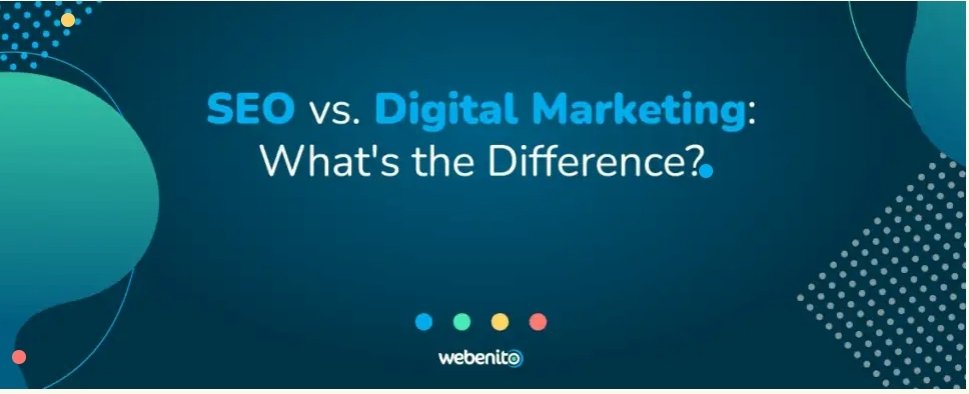Digital Marketing vs Performance Marketing – Which is better?

The Covid-19 pandemic has accelerated the adoption of digital solutions and processes by global businesses.
As per the survey results released by Microsoft and market research firm IDC Asia Pacific, 73% of organizations are speeding up their digitalization in response to the pandemic.
As per another report, business leaders believe that innovation is critical to the success of their companies. To remain competitive, SMEs must adapt and incorporate digital technology into their marketing strategies with the assistance of digital marketing and advertising agency. In fact, the plethora of available digital solutions can easily overwhelm business owners.
You might have even heard the terms ‘digital marketing’ and ‘performance marketing’ used interchangeably. However, these terms are not interchangeable as used by digital marketing and advertising agencies.
Digital Marketing
Essentially, digital marketing is any marketing campaign that involves digital communication.
Digital marketing, sometimes known as internet or online marketing, is the promotion of brands using the internet and other digital communication channels to reach out to potential clients.
This includes multimedia messages and text as a marketing channel in addition to social media, email, and web-based advertising.
Performance Marketing
As the name implies, it is performance-based marketing.
Performance marketing is digital marketing or advertising strategy in which businesses only pay when a specific result is achieved. This could be a new lead, a sale, or any other outcome agreed upon between the advertiser and the business.
Affiliate marketing, online advertising, and sponsored content are all examples of performance marketing channels.
Digital Marketing Vs. Performance Marketing
The approach followed by both marketing is what distinguishes performance marketing and digital marketing from each other. A successful performance marketing strategy includes digital marketing channels such as paid search, social, and display ads — but traditional digital marketing frequently focuses on vanity metrics such as reach, impressions, or likes.
Beyond vanity metrics, performance marketing focuses on long-term, strategic key performance indicators (KPIs). This means focusing on revenue and retention rather than engagement or awareness. The following are the points of difference between performance marketing and digital marketing as analyzed by the experienced digital marketing and advertising agency:
- Performance marketing is a sub-category of digital marketing – marketing that uses online channels. The former utilizes a payment model that requires clients to pay only after achieving their desired outcome.
- Digital marketing, also known by the terms online or internet marketing, encompasses a wide range of payment models, channels, and strategies. On the other hand, performance marketing can include optimizing these strategies and channels. Critically, the type of payment model chosen defines the marketing strategy.
- Performance marketing strategies typically have shorter-term objectives. Performance marketing goals, as opposed to digital marketing goals, typically focus on easy-to-measure metrics such as the number of leads generated.
The best approach for the small and medium-sized enterprises (SMEs) business is determined by the brand’s idealistic business goals, marketing goals, and culture.
How does performance marketing work?
Performance marketing fosters collaboration between advertisers (merchants or clients) and publishers (affiliates or marketing agencies). The advertiser pays the publishers when a specific action is completed in this marketing method.
Consider a business and a digital marketer as examples.
Results are what matter most in business. These outcomes can include sales, leads, app installs, subscriptions, and so on. The ultimate goal is for prospects to achieve objectives that move them further down the funnel and, eventually, convert them into customers. A digital marketer’s job is to generate clicks, views, impressions, and sales. They regularly pay advertising platforms to achieve these objectives.
In short, the company wants marketing qualified leads (MQLs), and the digital marketer pays for views, clicks, and impressions. What role does performance marketing play in all of this?
Digital marketers or pay-per-click (PPC) experts pay for advertising in performance marketing, while the business pays for the results. Depending on the campaign goal, the results could range from an MQL to a subscriber.
Assume a company decides to pay a $10 fee to an advertising service for each MQL generated. This value does not include the cost of advertising, cost per click (CPCs), cost per impression (CPM), or any other fees for post reach and engagement.
The advertiser’s method of obtaining the lead is unimportant to the business as long as qualified leads are generated. The digital marketer is responsible for the entire cost of the advertising business space, as well as the conversion rate, click-through rate (CTR), and other quantifiable factors.
Assume the digital marketer could obtain MQLs for $5 per lead. In that case, the marketer’s primary profit is the difference between the amount paid by the client and the amount left after running the ads (in this case, the payoff is $10 – $5 = $5). This remaining margin serves as the digital marketer’s commission. To maximize profits, marketers must focus on lowering CPLs through optimized campaigns.
This is why performance marketing benefits everyone. It provides results to the business or clients while charging them only on a cost per acquisition (CPA) or cost per action basis. It also encourages marketers to optimize their ad spend and experiment with new ways to improve performance.
Payment Model for Performance Marketing
It is important to note that advertisers and publishers can set different commissions for each of their individual campaigns using any of the performance marketing payment models listed below.
Pay per sale (PPS): Advertisers prefer the pay per sale model because it allows them to pay the affiliate only when a deal is generated from the affiliate’s referral traffic.
Pay per lead (PPL): This method allows the affiliate to earn a commission when the referred visitors complete a specific lead action (free trial, newsletter, survey form, etc.). Visitors who do not sign up are not compensated. Publishers prefer this model because they only need to generate a lead to be paid and don’t have to think about paying for a paid plan upgrade.
Pay per click (PPC): A qualified click-through from the publisher’s site to a specific page on the advertiser’s website results in payment. A predetermined payment for each click is established before launching the campaign.
Why Is Performance Marketing a Win-Win Situation for Everyone?
The next big crucial step in digital marketing is performance marketing. It’s collaborative, fast-paced, and has room for constant improvement. It prioritizes real business impact over all else in its strategy, measured by action-focused metrics.
Performance marketing allows you to increase the scale and distribution of your marketing while also building mutually beneficial relationships with digital marketing and advertising agency. As more money is invested in digital marketing, the demand for more accurate data and a higher ROI will increase.





